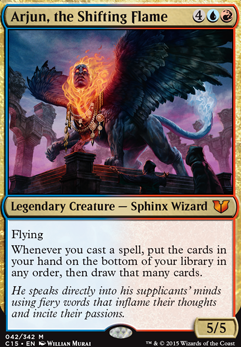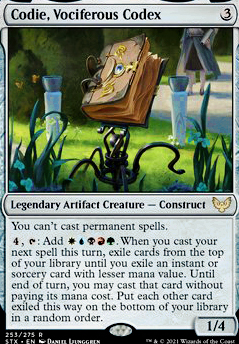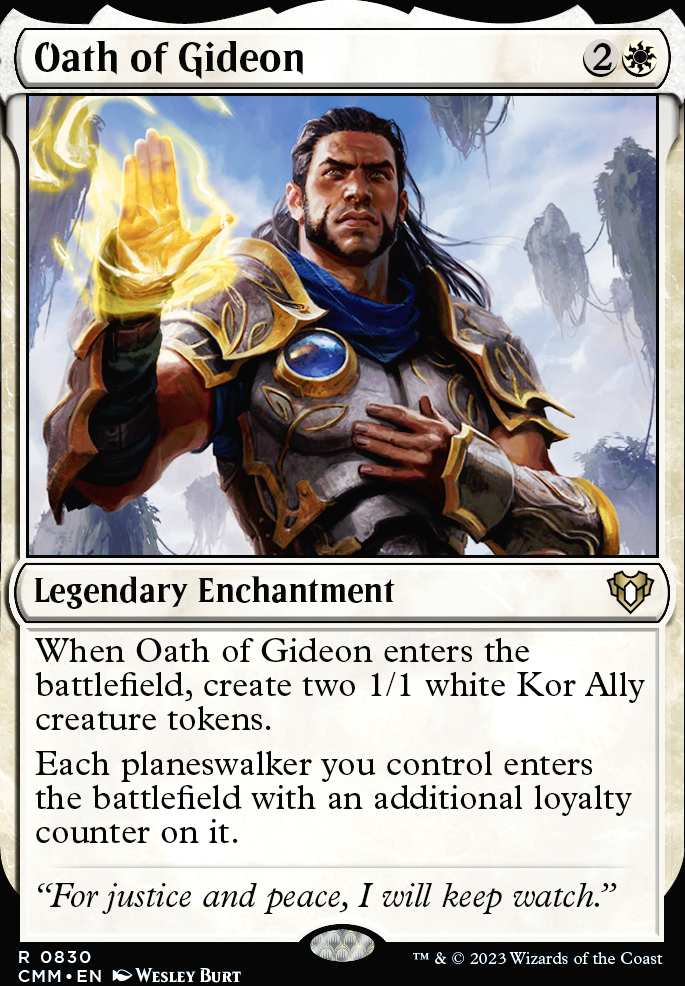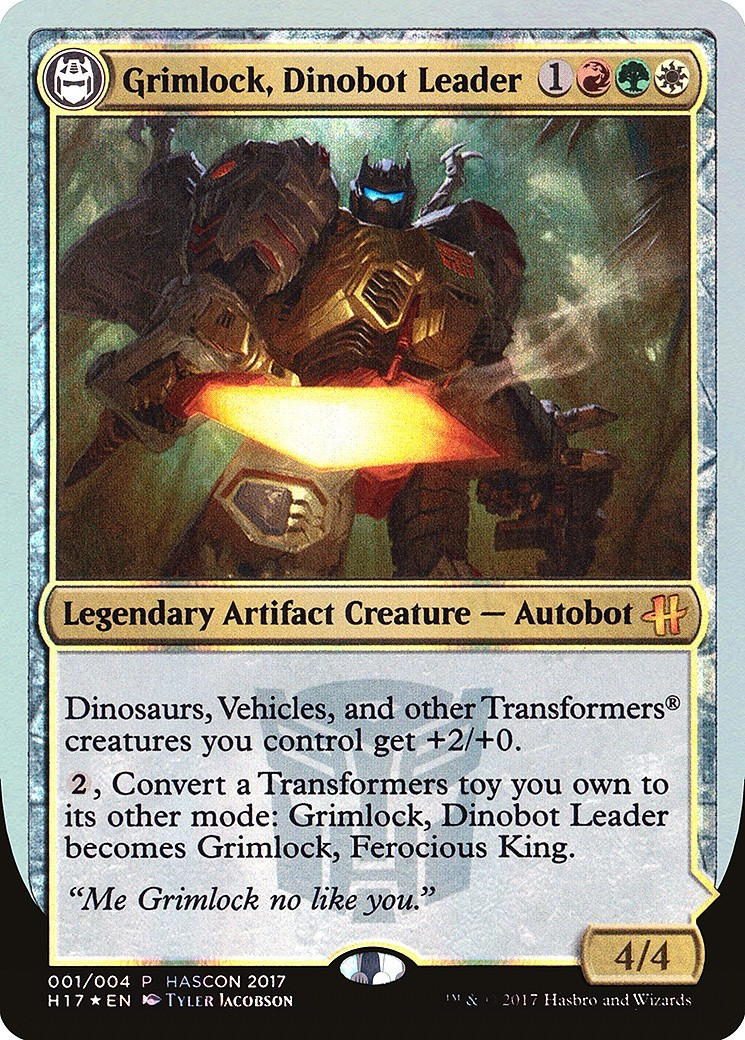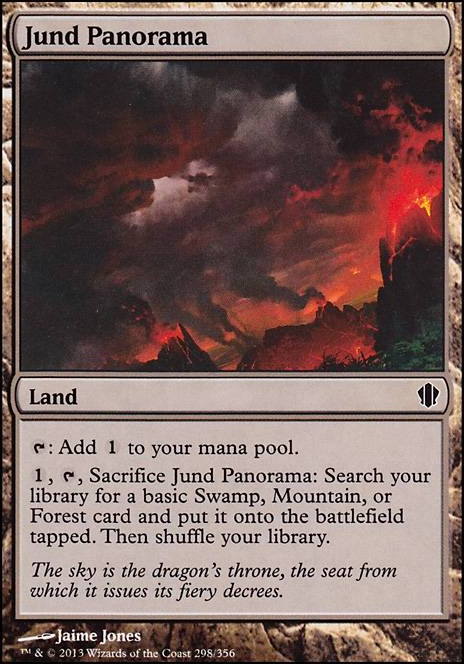Draw Cards (21)
- 1x Arcane Denial
- 1x Arcanis the Omnipotent
- 1x Azami, Lady of Scrolls
- 1x Brainstorm
-
1x
Consecrated Sphinx

- 1x Dictate of Kruphix
- 1x Fateful Showdown
- 1x Fevered Visions
- 1x Jace's Archivist
- 1x Mindmoil
- 1x Minds Aglow
- 1x Mystic Confluence
- 1x Niv-Mizzet, Parun
-
1x
Niv-Mizzet, the Firemind

- 1x Preordain
- 1x Rhystic Study
- 1x Sphinx's Tutelage
- 1x Stroke of Genius
- 1x Teferi's Puzzle Box
- 1x The Locust God
- 1x Windfall
Disruption (13)
Mana (41)
- 1x Command Tower
- 1x Darksteel Ingot
- 1x Evolving Wilds
- 17x Island
- 1x Izzet Boilerworks
- 1x Izzet Signet
- 5x Mountain
- 1x Nykthos, Shrine to Nyx
- 1x Reliquary Tower
- 1x Riptide Laboratory
- 1x Rogue's Passage
- 1x Sol Ring
- 1x Spinerock Knoll
- 1x Swiftwater Cliffs
- 1x Temple of the False God
- 1x Terramorphic Expanse
- 1x Thought Vessel
- 1x Vivid Crag
- 1x Vivid Creek
- 1x Wandering Fumarole
- 1x Worn Powerstone
Utility (11)
Commander (1)
Draw Triggers (14)
- 1x Alhammarret's Archive
- 1x Chasm Skulker
- 1x Diviner's Wand
- 1x Laboratory Maniac
- 1x Niv-Mizzet, Parun
-
1x
Niv-Mizzet, the Firemind

- 1x Obstinate Familiar
- 1x Psychic Corrosion
- 1x Psychosis Crawler
- 1x Sphinx's Tutelage
- 1x Teferi's Ageless Insight
- 1x Teferi's Tutelage
- 1x The Locust God
- 1x Thought Reflection
Combo Pieces (6)
- 1x Curiosity
- 1x Deceiver Exarch
- 1x Niv-Mizzet, Parun
-
1x
Niv-Mizzet, the Firemind

- 1x Splinter Twin
- 1x Wandering Fumarole
NonDraw Adv (5)
Maybeboard
Utility (8)
- 1x Baral, Chief of Compliance
- 1x Caged Sun
- 1x Docent of Perfection Flip
- 1x Dualcaster Mage
-
1x
Glacial Chasm

- 1x Sapphire Medallion
- 1x Seal of the Guildpact
- 1x Venser's Journal
Disruption (2)
Draw Cards (7)
- 1x Blue Sun's Zenith
- 1x Diviner Spirit
- 1x Dragon Mage
- 1x Keranos, God of Storms
- 1x Kumena's Awakening
- 1x Lu Xun, Scholar General
- 1x Well of Ideas
Other (2)
NonDraw Adv (4)
Combo Pieces (2)
Combat Threats (1)
Draw Triggers (1)
Suggestions
Updates Add
Comments View Archive
Attention! Complete Comment Tutorial! This annoying message will go away once you do!
Important! Formatting tips — Comment Tutorial — markdown syntax
Please login to comment
| Top Ranked |
|
| Date added | 8 years |
| Last updated | 3 years |
| Legality | This deck is Commander / EDH legal. |
| Rarity (main - side) | 5 - 0 Mythic Rares 36 - 0 Rares 22 - 0 Uncommons 15 - 0 Commons |
| Cards | 100 |
| Avg. CMC | 3.42 |
| Tokens | Boar 2/2 G, Copy Clone, Insect 1/1 UR, Squid 1/1 U |
| Folders | Ideas, Decks, other people's decks, EDH Ideas, Interesting Commander Decks, Commander Folder, Interesting decks, edh, EDH, Possible decks |
| Votes | |
| Ignored suggestions | |
| Shared with | |
| Views |
